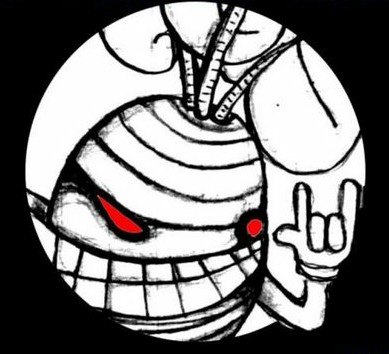The key to the right of Å is you looking at this keyboard.
I bought a laptop with a Swedish keyboard since I’ll be studying there for a few years. It’s a learning curve for sure and this face is accurate
I once had a laptop with (I think) Swedish kb (that I bought during my studies in Latvia), but it wasn’t this loaded. Judging by the comments, this seems to be a mixed Scandinavian kb layout, for multiple languages.
This is called Nordic layout. I believe it’s demographic is Norway, Denmark, and Sweden (maybe Finland also).
^
••
~
We’re all just going to ignore the ,|'/` key?
the left side is equally cursed

How often do most people use § and ½ !? Is a dedicated key really necessary?
I work as an engineer in an governmental capacity. Use § daily when writing letters citing legislation.
I used to used that all the time. Alt 167?
If your position as a civil servant involves official communication with companies, you’re going to need the § sign a lot on a daily basis, and the Nordic countries have basically always had large public sectors.
§ is common in meeting minutes and legal texts. dunno about ½ though
I’d say ½ get used maybe 50% of the time.
“common” really depends on context
i thought “in the context of which this keyboard layout is useful” was fairly implicit in this case
My point was more about it being common in meeting minutes. I can’t say I’ve ever seen it in use as such despite sitting through a decade’s worth of meetings, though I also don’t doubt that it’s used in certain specific contexts
well here it’s used all the time. i’ve also sat through a decade’s worth of meetings, mainly as the secretary, and section signs are expected. last time i used it was in june.
Finally, a keyboard for Sims!
I used to use one of them in my passwords - it usually works fine, until I’m met with a platform where this key doesn’t exist (damn you, Nintendo Switch!)
Somebody is going to comment that it’s the loss button any minute now.
I think that’s a letter from the Yautja alphabet
Similiar to Swiss one but worse.

Ok I’m probably the idiot here, but why not just make one key umlauts, and one for both directions of apostrophe, and then make it a key combo with the standard vowel?
Like how shift+a = A, it would be umlaut+a = ä, and shift+umlaut+a = Ä?
How do the real keys (pic) even work?
I’m guessing (not sure) that AltGr, visible in the picture, switches between the two options like Shift would. Shift still switches case.
I think the main reason they didn’t make an umlaut modifier is that ä is considered a distinct letter from a. It would be like asking why have a key for w (“double u”) when it could have been typed as uu. Not a perfect analogy but the best I can think of right now.
Swiss here, ¯\_(ツ)_/¯.
In all seriousness; it’s for german, french and italian. Guess it was just determined to use the limited keys more effieciently in typing. And some are combinators and 9 of 10 people don’t know which or what or how.
Ah, btw, we can only type uppercase ÄÖÜ via capslock.
The position of the umlaut keys are also identical to the German layout. That’s probably why there’s no switch for those.
Incidentally, the German layout uses such switches for diacritics, but only those used commonly in French, bit also not all of them. ë and ï are impossible, for example, as is ç. And diacritics on consonants are also right out, because fuck the Slavs, I guess.
I’m a German that uses an US keyboard with the US intl layout. I think it solves all of my keyboard needs: I have the benefits of the US layout for programming and access to all common umlauts.r RAlt+S = ẞ e.g. https://de.m.wikipedia.org/wiki/Tastaturbelegung_US-International
Yep US intntl FTW!
This looks like a Norwegian/Swedish keyboard. What’s infuriating about it?
It’s a nordic keyboard, and it’s infuriating that it’s imposible to tell which key is Æ and which is Ø. Just decide on one key for each for f…ks sake.
It’s easy. If you’re swedish, look for the swedish letters. If you’re danish, look at the first letter, and if you’re norwegian look at the second.
It’s easy.
Just be Swedish.
As they say in Sweden, Scandinavian is one language, except that the Norwegians can’t spell it and the Danes can’t pronounce it.
As a Finn I know the sentiment but I don’t know if I’ve heard that specific phrase before.

It must be hard being a Swede.
Best regards,
Norway
So it’s the danish who are the odd ones.
Always was
Always will be.
Hey, it’s Danish too!
The infuriating part is that Danes and Norwegians couldn’t agree on which buttons to place the Æ and Ø. Even worse is that usually the Norwegian layout is more pronounced/better positioned for backlighting making the Danish Æ and Ø look like an afterthought.
deleted by creator
Different countries have different languages, alphabets and keyboard layouts. Scandinavian countries keyboards are quite commonly produced together because they share most but not all of the letters, symbols and positions. This looks pretty standard to me.
Edit: As a user from respective country you learn fast to read automatically the position for shared keys before you learn touch typing or looking for an uncommonly used symbol. The real annoyance is when laptop makers switch up key positions because they think they know better.
To explain more specifically for those that are, like me, curious but unfamiliar:
- Top left of each of those keys is the Danish layout
- Top right is Norwegian
- Bottom right is Swedish
- The Å is the same in all three so it can just be by itself
As someone who isn’t clued up on Nordic languages and has no idea how any of this is supposed to be pronounced, my brain just went to the overtones for help
Æ = Like the A in (American) “asshole”
Å = Like the A in (British) “awful”.
Ø = Like the U in (American) “Ugly”.As a Scandinavian, one of my biggest pet peeves is when someone uses Ø instead of O because they think it looks cool. Sure, whatever, but it makes reading it really insufferable. Imagine if someone typed your name as UnduBrani and expected you to pronounce it the same while not tripping over decades of reading practice.
Ø = Like the U in “Ugly”.
Not like German Ö? Or French “eu” as in l’heur or l’Europe? I can’t seem to find any English words with the sound I’m thinking of though. In some dialects “curry” might possibly be approximated as [körri] but that’s not very helpful… (Coincidentally, Ö is also the face I made when I read this)
Your examples are more close for sure imo. The poster above must be from some other Scandinavian country than my own, bc I can’t make that make sense at all.
Øh, really?
“Øh” is actually how we spell and pronounce the Danish equivalent of “uh” or “uhm”.
That would be Norwegian I assume. They are pronounced different in Danish.
Yes. From my knowledge of danish:
Æ: Not pronounced.
Ø: Similar to Norwegian.
Å: Similar to Norwegian, except you need to swallow a whole potato while saying it.
This is because someone can’t be arsed to make a dedicated Norwegian/Swedish/Danish keyboard. Norway and Denmark uses æ/ø/å. But ofc not the same key position. Sweden ä/ö/å. The same goes for several of the other keys. What they type depends on language used
deleted by creator
For Kalmar!
I am already a keyboard warrior, let’s go!!!
How do you pronounce that letter? There’s a Danish band I’ve been getting into lately, MØL, but I don’t know how to say it. I’ve been saying “mole” in my head, but I doubt that’s right. It seems to get romanized as “oe” so would it be pronounced “mo-el”?
The Ø is pronounced as eg. the vowel sound in “learn” or the vowel sound in “bird”.
Like burn?
In Norwegian we’ll sometimes write burn as børn in very informal settings or for fun so that’s my go to example :-)
Børn to be wild or Børn baby, Børn?
“Learn” and “bird” are pronounced very differently depending on the accent of English. Wiktionary has “learn” RP pronunciation listed as lɜːn and American as lɝn, although personally I don’t believe in ɝ so I would write it as lɹn and bɹd.
Slight rant about American English IPA, but Wiktionary even has American “bird” listed as bɜɹd, which is frankly ridiculous. Say bɜɹd out loud and it sounds absolutely insane. Be’rd. Nobody says bɜɹd, it’s gotta be bɹd. English spelling treats R as a consonant, but American English functionally treats it like a vowel. If we spelled with R the same way it’s pronounced, it would be brd, lrn, teachr, wrking, etc. Not suggesting a spelling reform, because the current system works so well for uniting different accents of English, but it seriously bugs me when people talk about how American R (ɹ) is a consonant. It’s not!
That’s simply wrong (in Danish)
Basically its the sound you make just before puking, just without the gargling. Do a video search to confirm
Accurate
The musician MØ was asked how to pronounce her stage name once, and she pointed out its just her initials (Marie Ørsted) so there’s not really a right pronunciation to MØ.
I still don’t have a clue how Ø is pronounced, like in Ørsted.
While “MØ” is her initials, it’s actually also a word in Danish for “Maiden”. It’s an old word, not used commonly.
The Google Translate text-to-speak is fairly accurate: https://translate.google.com/?sl=da&tl=en&text=Mø&op=translate
Ørsted is also pronounced fairly accurately: https://translate.google.com/?sl=da&tl=en&text=Ørsted&op=translate
Well the vowel Ø represents OE in Danish.
It’s a noise that is between the English noises “oo” and “u”.
“Møl” is the Danish word for “Moth”, the Google Translate text-to-speech pronunciation is pretty good:
https://translate.google.com/?sl=en&tl=da&text=Moth&op=translate
Apropriate time to say the Norwegian alphabet is the best?
https://www.youtube.com/watch?v=f488uJAQgmw (Funny song about why Norways alphabet is the best)
deleted by creator
deleted by creator
Shortcut for writing System of a Down lyrics
I bet that keyboard feels terrible to type on.
deleted by creator
It’s a Thinkpad thing. I always use Linux and don’t map them to anything so I don’t really find them useful but maybe they are in windows.
Meanwhile: Å
I wish those type of words would been removed from all languages






















